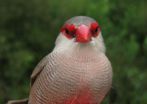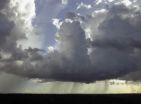(Press-News.org) The widespread use of true random number generators (TRNGs) has taken a step closer following the creation of the most lightweight designs to date by researchers at Queen's University Belfast's Institute of Electronics, Communications and Information Technology (ECIT).
Members of the Institute's cryptography research team have produced a series of circuits that are up to 50 per cent smaller than anything else currently available. Optimised for digital circuits, FPGA and ASIC, they push efficiency to the limit by using just one logic gate, one look-up table and four transistors respectively.
TRNGs are essential for IT security because virtually any security application relies on unpredictable numbers such as cryptographic keys. Current systems however are either too expensive or are not fast enough for many applications. That is why more nimble pseudo-random number generators are in widespread use even though the sequences they generate can be detected under certain types of attack, making them much less secure.
The approach of ECIT researchers Jiang Wu and Dr Máire O'Neill has been to use the white noise inside the circuit to generate the randomness, effectively simulating the toss of a coin. To do this, they developed a new mechanism to measure the noise and generate the random output.
"The most challenging part of the work was to find the new mechanism that can effectively sample the noise," said Wu.
"True random number generators have been extensively studied in recent years; many very efficient designs based on different noise measurement mechanisms have been proposed. It was not clear if more efficient designs were even possible. After investigating several candidates, finally we found a successful one."
The next step is to find ways of making the generators sufficiently robust to be embedded in devices such as mobile phones, smartcards and RFID tags, and – where they are used for security applications - to secure them from attack and develop appropriate countermeasures.
Other related work currently underway at ECIT includes designs for highly efficient physical unclonable functions (PUFs). These authenticate individual chips by extracting and identifying – but without revealing - their unique fingerprints which can then be used in a variety of security applications.
###
Media inquiries to Brian Arlow on +44 (0) 28 9147 0700 or (mob) +44 (0) 7860 289143 or email brianarlow@mac.com
NOTES TO EDITORS
ECIT
Part of The School of Electronics, Electrical Engineering and Computer Science at Queen's University Belfast, ECIT is housed in a specially designed 4,000m2 building, located off-campus, at the Northern Ireland Science Park in Belfast's Titanic Quarter. The Institute has four research groups covering areas such as broadband wireless communications, electronic data security, image and speech processing, telecommunications software and antenna design for mobile communications. The Institute currently employs 140 people.
Research at ECIT's High Frequency Electronics Circuits division covers aspects ranging from custom high performance gallium arsenide and sub micron silicon integrated chips to self adapting antenna solutions, monolithic packaging strategies and analytical and computational electromagnetics.
Cryptography research staff
Dr Máire O'Neill who leads ECIT's cryptography research team, held a prestigious five-year UK Royal Academy of Engineering research fellowship from 2003 to 2008 in the area of cryptographic algorithms and architectures for system-on-chip. She is the recent recipient of a £1.2m Leadership fellowship grant funded by the Engineering and Physical Sciences Research Council (EPSRC) to conduct research into next generation data security architectures.
She has received numerous awards for her research. She was awarded the Women's Engineering Society (WES) prize at the 2006 IET Young Woman Engineer of the Year event and in 2007 was named British Female Inventor of the Year at the British Female Inventors & Innovators Network (BFIIN) awards.
For further information please visit www.ecit.qub.ac.uk/ or contact Brian Arlow on +44 (0) 28 9147 0700 or (mob) +44 (0) 7860 289143
Lightweight true random number generators a step closer
2010-09-20
ELSE PRESS RELEASES FROM THIS DATE:
Protein may advance Parkinson's by preventing neurons from clearing debris
2010-09-20
A protein linked to Parkinson's disease may cause neurodegeneration by inhibiting autophagy—the process in which cells digest some of their contents—according to a study in the September 20 issue of the Journal of Cell Biology (www.jcb.org).
Autophagy serves to clear a variety of toxic waste from cells, including misfolded proteins and defective mitochondria. These two types of cellular trash accumulate in neurons from Parkinson's patients, suggesting that autophagy could be impaired in these cells. A commonly amassed protein in Parkinson's disease is alpha-synuclein, ...
Magnetic attraction for fish, crabs?
2010-09-20
SEATTLE – Super-sized electromagnetic coils are helping explain how aquatic life might be affected by renewable energy devices being considered for placement along America's coastal waters and in the nation's rivers.
Scientists with the Department of Energy's Pacific Northwest National Laboratory are examining whether a variety of fish and invertebrates change their behavior during and after exposure to an electromagnetic field similar to those produced by marine and hydrokinetic power devices that capture energy from ocean waves, tides, currents and rivers. Research began ...
Female fish abandoned by males to raise offspring on their own
2010-09-20
Caring for children can be a tough job, particularly if you are a female cichlid fish.
Native to the crater lakes of Nicaragua, cichlid fish look after their young by defending them against would-be predators. While male and female cichlid fish generally share parental responsibilities, research shows that this is not always the case.
Conducted by an international team of researchers that included two biologists from Monash University, and published in the journal Behavioral Ecology and Sociobiology, new research has shown that male cichlid fish have a propensity ...
Secrets of birds' sexual signals revealed
2010-09-20
Patterned feathers, previously thought to be used only for camouflage in birds, can play an important role in attracting a mate and fending off rivals, a University of Melbourne study reveals.
Ms Thanh-Lan Gluckman, co-author of the paper and Masters of Philosophy student from the Department of Zoology at the University of Melbourne, Australia, said this finding brought a new perspective to research in animal communication and evolution.
"The implication of this study is that feathers don't need to be bright and showy to be used in sexual signalling and hence this changes ...
Protein behind development of immune system sentinels identified
2010-09-20
A protein called PU.1 is essential for the development of dendritic cells, the sentinels of the immune system, Walter and Eliza Hall Institute researchers in Melbourne, Australia, have shown.
Dendritic cells (DC) are immune cells that present proteins from foreign invaders, such as viruses, to the killer T cells of the immune system, allowing a full immune response to be mounted against the invaders.
Researchers from the Immunology division have been studying dendritic cells and how different molecules regulate their development.
Dr Li Wu said one of the molecules ...
Citizen scientist
2010-09-20
We are all scientists now, thanks to SETI@home, Galaxy Zoo, The Great Sunflower Project, Folding@home and counltess other projects that allow individuals to take part in scientific research directly or indirectly. In the case of SETI@home and Folding@home one shares one's computer CPU with the researchers, whereas Galaxy Zoo is more about active involvement with the classification of stellar objects in images of the night sky, for instance.
Now, writing in the International Journal of Organisational Design and Engineering, US researchers have mapped out an approach to ...
Marine scientists unveil the mystery of life on undersea mountains
2010-09-20
They challenge the mountain ranges of the Alps, the Andes and the Himalayas in size yet surprisingly little is known about seamounts, the vast mountains hidden under the world's oceans. Now in a special issue of Marine Ecology scientists uncover the mystery of life on these submerged mountain ranges and reveal why these under studied ecosystems are under threat.
The bathymetry of our oceans is now resolved at a scale and detail unimaginable by early pioneers and recent estimates suggest that, globally, there may be up to 100,000 seamounts, yet despite best efforts less ...
Study gets measure of how best to prevent blood clots
2010-09-20
Treating hospital patients with thigh-length surgical stockings, rather than knee-high socks, can reduce life threatening blood clots, a new study suggests.
Researchers found that knee-high stockings, which are similar to flight socks, do little in stroke patients to prevent deep vein thrombosis (DVT), a life threatening form of blood clot that can travel up into the heart and lungs, .
The CLOTS (Clots in Legs Or sTockings after Stroke) study from the University of Edinburgh highlights that the clot rate in stroke patients was higher among those fitted with the shorter ...
The Amazon rainforest -- a cloud factory
2010-09-20
The forest in the Amazon Basin produces its own rain. During the wet season, aerosol particles, which serve to condensate clouds and precipitation here, mainly consist of organic material. These aerosols are released by the rainforest itself. This has been demonstrated by scientists from the Max Planck Institute for Chemistry in Mainz, who are now able to draw conclusions about the mechanisms of this ecosystem: the high content of organic material indicates that the Amazon Basin acts as a largely self-contained biogeochemical reactor during the rainy season. The results ...
Vigilant camera eye
2010-09-20
»Goal, goal, goal!« fans in the stadium are absolutely ecstatic, the uproar is enormous. So it's hardly surprising that the security personnel fail to spot a brawl going on between a few spectators. Separating jubilant fans from scuffling hooligans is virtually impossible in such a situation. Special surveillance cameras that immediately spot anything untoward and identify anything out of the ordinary could provide a solution. Researchers from the Fraunhofer Institute for Applied Information Technology FIT in Sankt Augustin have now developed such a device as part of the ...






